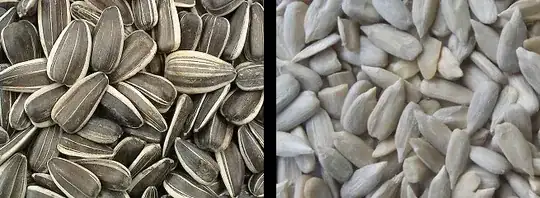By using a dehuller machine. See:
http://www.youtube.com/watch?v=-hegzzj9Rzk
or
http://www.buhlergroup.com/global/en/products/dehuller-dgba.htm
How does a dehuller work? I don't know, but it seems that Google does:
The most popular decorticator for sunflower is proposed by the Bühler
Cie. It consists in a rotating blade that propels the seeds by
centrifuge force against a wall. It functions on one impact. It is
designed for partial removal of hulls because due to its principle, it
is not able to carry out a good dehulling without increasing the force
of the impact. The kernel oil content is so high in sunflower that
under the violence of he chock, some oil can be transferred to the
hulls and is lost. Moreover, increasing the rotating speed of such
dehuller drives to increase the production of fines that are difficult
to separates from hulls. Another mono-chock kind of dehuller is
air-jet impact where the propelling of the seeds is done by a strong
current of air. Multi-chocks dehullers like the Ripple mill improve
the dehulling quality because they carry out several impacts on the
achene with milder violence and enable en enhanced separation of hulls
without generating an excess of fines.
See: http://www.creol.fr/CTMSite/creol/us/travaux/img/dehulling_3.pdf
See also: http://www.buhlergroup.com/northamerica/downloads/DGBA_Sunflower_Dehuller.pdf for some schematics of the inside of the machine and some insights about the way it works.

